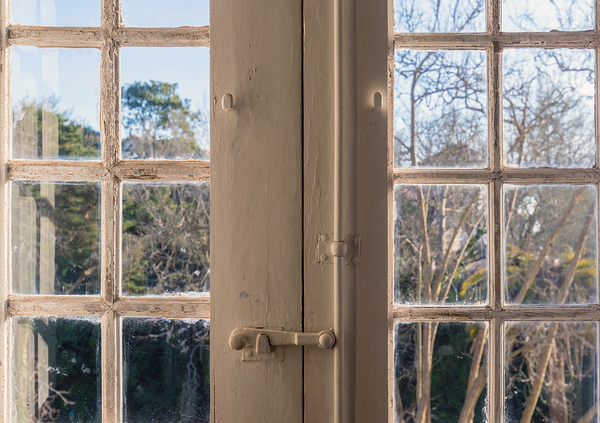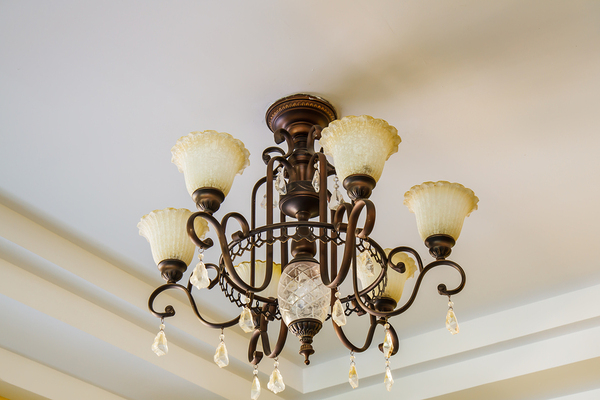
There’s truth in the old saying, “They just don’t make ‘em like that anymore.” Sometimes, that’s a good thing. But once in a while, an older home has a treasure that’s so different, so rare and so well made that it’s worth preserving, even if it’s a bit of an eyesore by today’s standards.
No matter what your decorating taste happens to be, here are 6 things your home inspector might find that mean you’ve hit the jackpot. Love ‘em or hate ‘em, these elements are worth keeping or carefully removing so that someone else can enjoy them.
#1: The Dreaded Pink Bathroom
There’s a definite niche market for vintage pastel bathroom tiles and fixtures. Every shade from baby blue to pale yellow is important from a preservation perspective, but pink fixtures tend to reign as queen. Check out Retro Renovation’s archives on the subject.
The color is known as Mamie Pink, named for former FLOTUS Mamie Eisenhower. She famously redecorated her private bathroom at the White House in the signature pink shade.
Bathtubs, toilets, sinks and tiles in every pastel shade tend to have a devoted following. If you can’t imagine living with them, opt for careful removal and resale.
#2: Knotty Pine Cupboards, Panelings and Floors
People tend to feel one of two ways about knotty pine. They either love its character and warmth or they can’t wait to rip it out and install something modern. It’s a dark and strong personality that commands attention. Check out the knotty pine gallery at Decorologist.
Knotty pine decor elements tend to be hefty, durable and beautifully made, whether they’re cupboards, detailed wall paneling or floors. If you’re not crazy about the yellow-gold finish and the characteristic dark knots, you can paint them to brighten up the room.
Seal the knots with shellac primer to keep the sap from seeping through. If you can’t make pine fit with your decor dreams, let a pro remove them to minimize damage for resale.

Restore, don’t replace, old window and glass-paneled doors.
#3: Old Wood Frame Windows
Think replacement windows are always better than single-panes? Think again. Older windows have a level of craftsmanship that’s rare today.
They can usually be repaired, and the single pane of glass isn’t as much of a deficit as you might imagine. Scott Sidler of The Craftsman blog says restored and weather stripped single-panes can exceed modern energy code requirements.
Original windows preserve the architectural beauty of the home. In a very old home, original windows are also important for preserving its market value. Unless you have deep pockets for custom replacements, new windows will stick out like a sore thumb.
#4: Finer Details Such as Trim Molding and Doors
If you’re buying a house that needs extensive work, it might seem easier to remove certain elements and replace them with something new. What might surprise you is the difference between modern details and those that came with the house. Oftentimes, they’re worth keeping.
Antique molding and doors have a distinctive heft and fancy profile. Modern reproductions are thinner, narrower and lack the handcrafted appearance.
Just because you can buy new rosettes for the corners of a doorway doesn’t mean they’ll have the same beauty as the originals. The same goes for a reproduction paneled door.

Rewiring lets you keep the character and lose the risk.
#5: Interesting Light Fixtures
That glorious old chandelier in the foyer and schoolhouse lights in the kitchen aren’t inherently unsafe. Even if they flicker and look precarious now, keep in mind that fixtures are nothing but a pretty container that holds the electrical components.
Few light fixtures are beyond repair. With new wiring, they’ll shine up like a new penny and operate safely. In many cases, they’ll last longer than new replacements, too. This Old House has a step-by-step rewiring guide that makes it easy.
#6: Painted Staircases
What’s hiding under decades of paint? In an older house, a painted staircase might conceal magnificent old walnut or oak. Before you slather on another coat of paint or worse—replace the treads and handrails—think about stripping off the paint and breathing in new life.
Old-growth hardwoods are exorbitantly expensive today. Original features such as a staircase deserve the star treatment. However, there’s a caveat. If the home was built before 1978, chances are it has lead-based paint.
Fortunately, professional abatement isn’t necessary as long as you follow the Family Handyman’s step-by-step guide for dust control and safe stripping.
That 1950s ranch house might have a few wrinkles, but it might also pack a few treasures. The same goes for the stately Victorian that needs a little hug. A little elbow grease can restore features to their former glory. If you can’t imagine living with one or more design elements, opt for the pry bar instead of the sledgehammer. If something is well made, chances are there’s a niche market for it.
When you’ve found the home of your dreams, the next step is hiring an inspector. We can help with that. Let Hire an Inspector connect you with a qualified, trustworthy pro near you.
